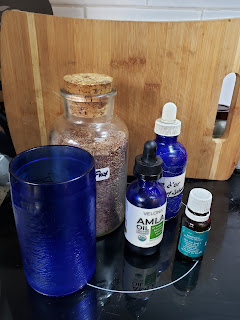Bookshelf musings
I'm excited about the newest additions to the garden bookshelf!
The first is Edible - illustrated by our local artist/ author and farmer Katie Kulla, with writers Kevin Hobbs (England) and Artur Cisar-Erlach (Austria). We're invited to journey into the world's Botanical larder, and hope for a sustainable future!
Last week, my friend Nikki brought me 'Eating to Extinction - the world's rarest foods and why we need to save them' by BBC journalist Dan Saladino. (Dan highlights his work in this video from 5-15) "diversity brings resilience" ...
While Nikki and I have grown shrubs of Camellia sinensis var Sochi (from Sochi on the Black Sea) for 15 + years; in Bandong, China (Yunnan province) there's a tea camellia tree (source of the rare pu-reh tea cakes), 400 years old, and 'the height of a three storey building!'
Often, a few gardeners or small communities save heritage seed or starts of favorite veggies and plants, adapted to our own region. I'm so grateful to see companies, gardeners and farmers who make the effort to seek out these treasures, and pass on the heritage!
In the 70s-80s, I was married to a botanist, who is well aware of the narrowing of food choices and limiting the species grown over the last 6-10 thousand years, and dangers inherent in monoculture. He still loves saving seed, trying different native plants and finding heritage varieties which can grow in our area.
Do you have favorite plants passed down from family or friends?






Nadya, what is a CSA? And whoa: we can eat sweet potato leaves? Any variety? A variety I might grow in my garden? Fascinating stuff!
ReplyDeleteCSA stands for Community Supported Agricultural - basically a subscription where you prepay the farmer, and pick up the chips on a certain day/ location. It can be seasonal, or for a whole year. I had CSA share with Katie and Casey (Oakhill Organics) for several years.
DeleteI really enjoy shopping from different farmers, and growing my own garden - so the farmers market works best for me.
And yes - sweet pastor leaves from garden sweet potatoes - Ipomoea batatas! 'Try then in stir fries, sautéed, in salads, boiled, steeped (infusion) or even juiced.' (P 92)
What an exciting book! I love to read about different parts of plants and or vegetables that are actually edible. My hubby loves to make a salad from dandelion greens and I've made tea with hibiscus flowers!
ReplyDeleteYay! Isn't it fun to think of me plants too try?
DeleteMy 12 year old grandson loves purslane, a great 'weed!'
These look like great additions to your shelf! Enjoy!
ReplyDeleteThank you!
Delete